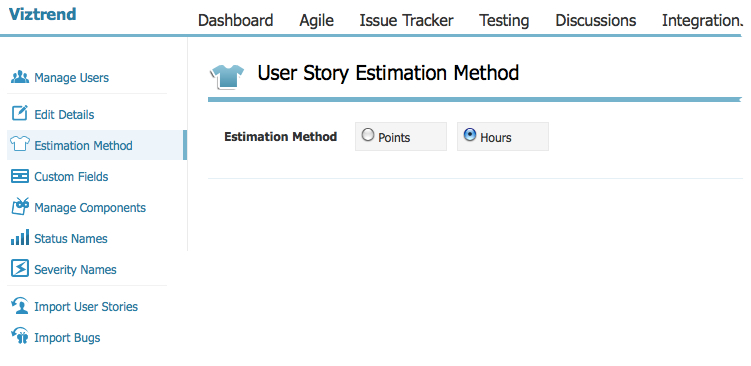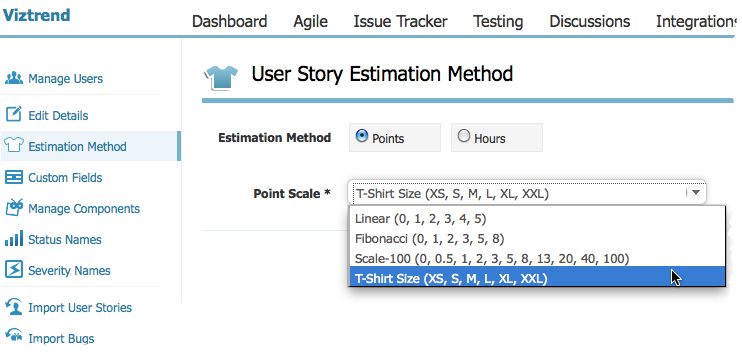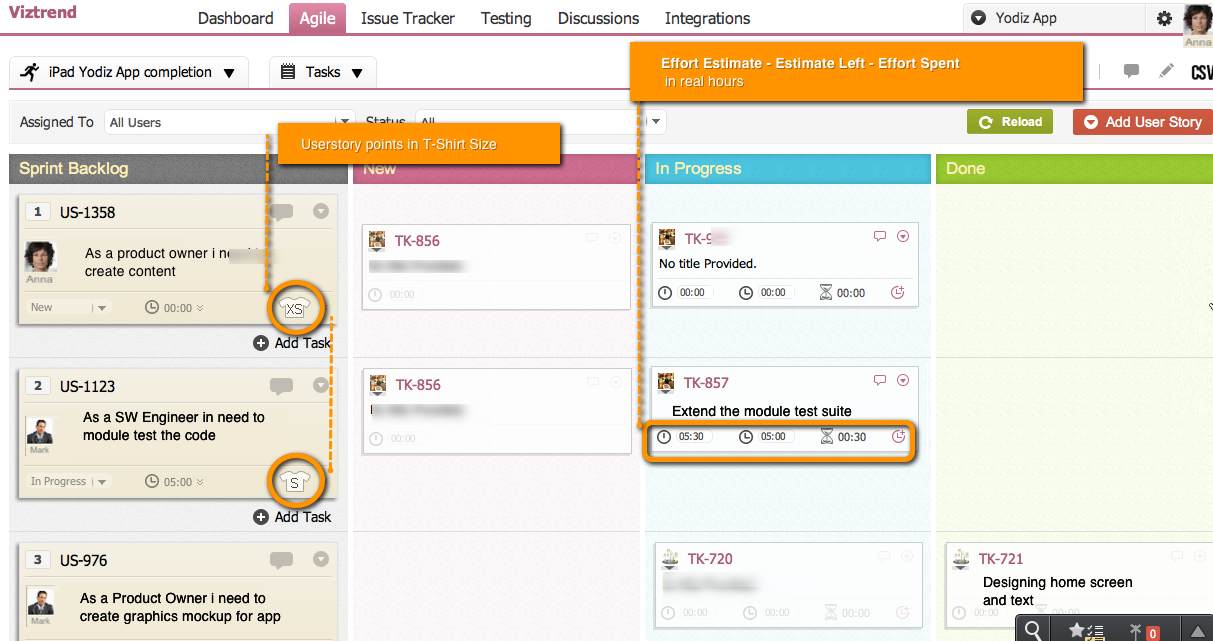Inspired by Mike Cohn approach of “StoryPoints vs Real hours” in sprint, in Yodiz we are estimating sprint task in real hours.
Mike Cohen recommend estimating the “Sprint Backlog” in real hours and “Product Backlog” in Story Points
Following guidelines provided by Mike Cohn in his bog for estimating sprints in real hours
- Using “Story points” for sprint planning, because story points are useful for long-term measures.
- Commitment-driven sprint planning: breaking the blacklog into tasks and commit to it, since its a short term planning, so it is easier to break the user story and give effort estimation in real hours.
- Velocity is a long term measure, when planning a sprint focus is given to priority of User Story and what CAN BE DELIVERED end of sprint.
This approach is more real and practical, as people can carefully plan the items they committing and be more realistic in planing.
Yodiz Approach of estimation method for “Sprint” and “Product Backlog”
- In Yodiz we are estimating the Product backlog in Hours and in different point scale (Fibonacci, linear, T-Shirt Size)
- Task are estimated in hours only
How to change the estimation method in Yodiz
Changing estimation method for userstory in Hours or Points scale (T-Shirt Size, Fibonacci, Linear)
Changing estimation method to hours

Yodiz ScrumBoard
- Estimating Userstory in T-Shirt size
- Task effort in real hours
References
http://www.mountaingoatsoftware.com


